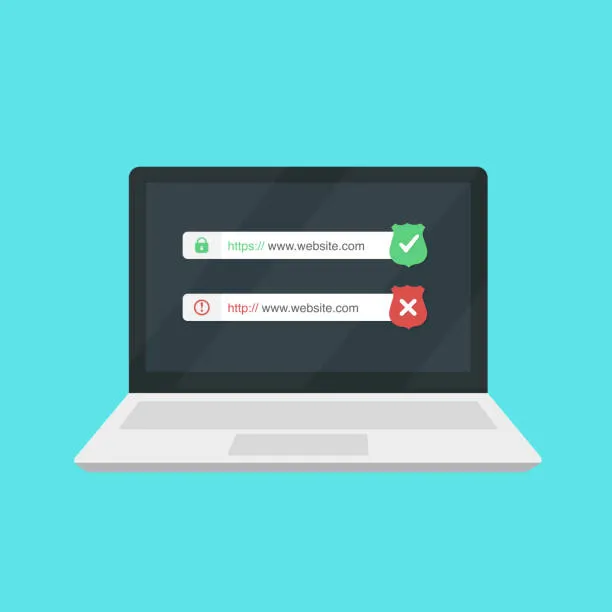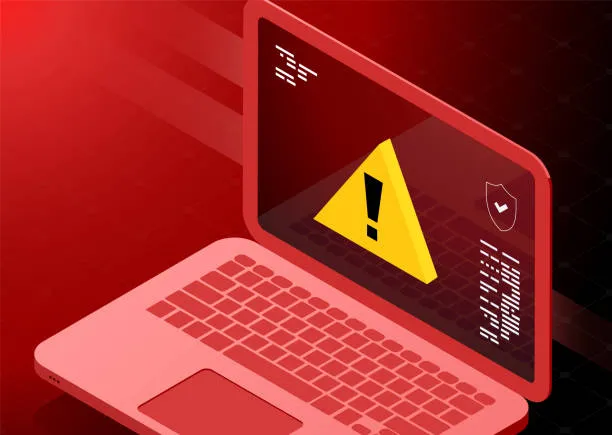In today’s digital landscape, website security is paramount. Every website faces security challenges, ranging from preventing unauthorized access to sensitive data, protecting against malicious attacks, and ensuring that users are not exposed to harmful content. One of the most critical components of web security comes in the form of HTTP status codes. Among these, the HTTP 403 Forbidden error stands out as a key player in blocking unauthorized access to resources and preventing potential threats.
While many website owners focus on other errors like 404 Not Found or 500 Internal Server Error, the HTTP 403 response plays an equally crucial role in maintaining the integrity and safety of a website. This article will delve into the significance of 403 Forbidden errors in web security, how to configure them effectively, and best practices for using them alongside other security tools.
How HTTP Errors Play a Crucial Role in Maintaining Website Security
HTTP status codes are essential to the proper functioning of websites. They provide feedback on the status of a request made by a client (typically a browser) to a server. When these codes are configured correctly, they help users and administrators alike understand whether their request has been processed successfully or if something went wrong.
The HTTP 403 error, specifically, is a client-side error that indicates a request was understood by the server, but the server is refusing to authorize the request. This rejection is a deliberate act by the server, and it plays a crucial role in restricting access to sensitive resources. By serving a 403 Forbidden response, websites can prevent unauthorized users from accessing areas of the site that require special permissions, such as administrative sections or private data.
In addition to 403 errors, other HTTP errors like 404 Not Found or 401 Unauthorized also serve specific purposes in securing a website. However, it is the 403 HTTP error that is particularly important when it comes to preventing unauthorized access and protecting sensitive data.
What is the Role of 403 Forbidden in Web Security?
The HTTP 403 Forbidden response serves a pivotal role in the security of a website. When a 403 response is issued, it signals to the user that they do not have permission to access the requested resource. The server has recognized the request but is intentionally blocking it. This deliberate block could be due to several reasons, and understanding its role is key to using it effectively in website security.
Preventing Unauthorized Access to Sensitive Resources
One of the primary functions of a 403 Forbidden error is to prevent unauthorized access to protected or restricted resources. Websites may contain areas that should only be accessed by administrators, members, or certain users. For example, private files, server settings, or user-specific content should not be exposed to unauthorized users. A 403 error ensures that only those with the correct permissions are allowed to access these resources.
How 403 Serves as an Important Gatekeeper
The HTTP 403 error acts as a gatekeeper, ensuring that only authenticated and authorized users are allowed to interact with restricted content. Without this layer of protection, a website could expose sensitive resources to malicious actors or unauthorized users. This would be a massive security risk, as attackers could exploit unprotected areas to steal data, execute harmful scripts, or manipulate content.
For example, a website with a 403 error on the login page ensures that only users with valid credentials are granted access to the dashboard, preventing unauthorized individuals from seeing sensitive data or taking harmful actions.

How to Properly Configure 403 Responses to Enhance Security
While the 403 Forbidden error is an important aspect of website security, it’s not enough to rely on default configurations. To maximize the security benefits of the HTTP 403 response, website administrators must ensure that their web servers are properly configured. Below are key recommendations for setting up 403 responses:
Recommendations for Setting Up 403 Responses in Web Servers
- Ensure Correct File Permissions: One of the most common causes of 403 errors is improper file or directory permissions. Make sure that files and directories are correctly configured with the appropriate read, write, and execute permissions. Sensitive files should only be accessible by the server or authorized users.
- Review and Customize .htaccess or Server Configuration Files: For Apache servers, the .htaccess file is crucial for defining access control rules. By configuring rules in this file, you can control who can access specific areas of the website. Similarly, Nginx users should review their server configuration files for any restrictive settings that might inadvertently trigger a 403 error.
- Limit Access Based on IP or Geo-Location: If your website needs to limit access based on geographic location or IP address, it’s essential to set up rules to deny specific IP ranges or locations. This method is commonly used to block malicious bots or attackers attempting to exploit vulnerabilities.
- Set Up Rate Limiting and CAPTCHA: In addition to restricting access to certain IPs or regions, you can further enhance security by integrating rate limiting or CAPTCHA mechanisms. For example, if too many failed login attempts are detected, the server can return a 403 response to block further attempts, preventing brute-force attacks.
Using 403 in Conjunction with Other Security Measures Like CAPTCHA or Login Attempts
The 403 HTTP error is even more powerful when combined with other security tools. For instance, integrating 403 responses with login attempts or CAPTCHA mechanisms can prevent attackers from gaining unauthorized access to sensitive areas of the website.
- CAPTCHA and 403 Errors: CAPTCHA is a widely used method to prevent automated bots from accessing websites. By triggering a 403 Forbidden error when CAPTCHA verification fails, web servers can block bots from proceeding to restricted sections of the site. This is particularly useful in preventing brute-force attacks on login forms.
- Login Attempt Limits and 403 Responses: When a user exceeds a set number of failed login attempts, returning a 403 Forbidden response helps mitigate brute-force attacks. By issuing a 403 error, the website effectively locks out unauthorized users after a certain threshold, making it much harder for attackers to gain access to restricted areas.
- Two-Factor Authentication and 403: Adding two-factor authentication (2FA) to your website enhances security. If users attempt to log in without completing the second authentication step, the server can return a 403 error, blocking unauthorized access to sensitive content.

How 403 Error Pages Contribute to User Experience and Security
While 403 Forbidden errors can be frustrating for users, they are a crucial part of maintaining the security of your website. It’s essential to ensure that these error pages are designed with both security and user experience in mind. Here are some best practices:
Suggested Posts:
Customizing the 403 Page to Inform Users Without Compromising Security
A well-designed 403 error page should inform users about the reason for the error without providing excessive details that could be exploited by attackers. For example, a generic message like “You do not have permission to access this page” is effective, while revealing too much information, such as file paths or server configurations, could make the site more vulnerable.
Best Practices for Designing Secure, User-Friendly Error Pages
- Clear Messaging: Make sure the 403 error page clearly communicates the lack of permission to access the page.
- Provide Navigation Options: Offer a way for users to navigate back to a safe section of the site, such as the homepage or contact page.
- Avoid Exposing Sensitive Information: Do not display stack traces or detailed server information on your error pages.
Advanced Security When 403 Is Used with Other Tools
The 403 HTTP error can be used in conjunction with other advanced security tools to further enhance website protection. Here’s how 403 errors complement other security systems:
Combining 403 with Firewalls and VPNs
Firewalls play a vital role in blocking malicious traffic before it even reaches the server. By configuring 403 responses to work with your firewall settings, you can block unauthorized requests right at the edge of your network. This reduces the risk of attackers getting too close to sensitive resources.
VPNs (Virtual Private Networks) add another layer of security by allowing only users with a secure connection to access specific resources. If a user attempts to access a restricted area without a VPN, the server can return a 403 Forbidden response, preventing unauthorized access.
How 403 Errors Complement User Authentication Systems
When paired with strong user authentication systems (like single sign-on (SSO) or multi-factor authentication (MFA)), 403 errors are even more effective. If a user fails to authenticate properly, a 403 error can be triggered to block any further requests, thereby preventing unauthorized access to sensitive areas.
Key Takeaways
The HTTP 403 Forbidden error plays a crucial role in web security by preventing unauthorized users from accessing protected resources. Whether it’s through controlling file permissions, limiting access by IP, or using 403 responses in conjunction with CAPTCHA or login attempt limits, configuring 403 errors correctly is essential for safeguarding sensitive areas of your website.
By combining 403 errors with other security tools like firewalls, VPNs, and advanced user authentication methods, website administrators can ensure robust protection against unauthorized access and cyber threats. Customizing error pages with clear messaging and user-friendly navigation also contribute to a positive user experience while maintaining high security standards.
- HTTP 403 errors prevent unauthorized access to protected resources, playing a critical role in website security.
- Properly configuring 403 responses involves checking file permissions, customizing server settings, and integrating with other security measures.
- Combining 403 errors with tools like CAPTCHA, firewalls, and VPNs provides an added layer of protection against cyber threats.
- Designing user-friendly error pages that communicate the issue without compromising security is essential for maintaining a secure user experience.
Frequently Asked Questions (FAQs)
What is HTTP response 403?
The HTTP response 403 indicates that the server has understood the request, but it is refusing to fulfill it due to insufficient permissions or other restrictions.
What does a 403 HTTP error mean?
A 403 HTTP error means that the user is forbidden from accessing the requested resource due to permission or authentication issues.
Why do I get an HTTP 403 response?
You receive an HTTP 403 response when you attempt to access a restricted resource without the necessary permissions or credentials.
How can I fix a 403 Forbidden error?
To fix a 403 Forbidden error, ensure that your file permissions are correctly configured, check your server settings, and review your access control rules.
What is the difference between a 403 error and a 404 error?
A 403 error occurs when access is explicitly forbidden to a resource, while a 404 error indicates that the requested resource does not exist.
